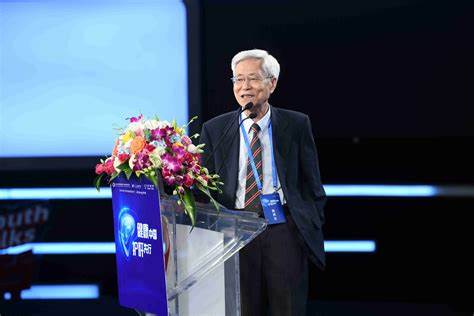On December 4, 2024, Vasco Knight@ASVS 2024 was held as scheduled at the Athenee, a Luxury Collection Hotel, Bangkok, Thailand. With the theme of "Innovation and Future", the conference brought together top experts in the field of vascular surgery from around the world, focusing on the latest treatment technologies of the aorta and abdominal aorta, the future development trend of China's medical technology, and related practical operations and innovative research and development.

Author: Professor Zhuang Hui
Unit: Xiamen Cardiovascular Hospital, Xiamen City, Fujian Province
summary
Aortic dissection complicated by perfusion disorder syndrome (MPS) is a serious complication that affects the prognosis of patients. Multidisciplinary team (MDT) collaboration, combined with endovascular therapy (TEVAR) and optimized treatment pathways, can significantly improve clinical outcomes in these patients. Based on clinical cases, this article discusses the etiology, classification, treatment strategies and technical points of MPS, and shares the successful experience of Xiamen Cardiovascular Hospital in this field. This article aims to provide guidance for medical research and clinical practice.
Introduction
Aortic dissection is a fatal condition that is associated with a significant increase in mortality associated with MPS. The occurrence of MPS not only increases the clinical complexity of patients, but also requires doctors to adopt more refined treatment strategies. Traditional treatment methods may not be able to effectively deal with complex pathological features and acute organ ischemia, and the cooperation model of modern medical technology and MDT provides a new solution to this challenge. Based on case analysis, this article shares the treatment experience and technical points for MPS, and provides practical guidance for clinical practice.
Etiology and classification
The occurrence of MPS is usually related to the true and false lumen anatomy, distal tears, and hemodynamic changes in aortic dissection. MPS can be divided into static, dynamic, and hybrid:
1. Static type: false lumen compression or reduced blood flow in the true lumen leads to insufficient organ perfusion.
2. Dynamic type: due to the change of blood flow in the true lumen of the aorta, the blood flow of the blood supply vessels is reduced, which in turn leads to organ ischemia.
3. Mixed: static and dynamic blood flow disorders at the same time.
Clinical manifestations include intestinal ischemia, renal ischemia, lower extremity ischemia, etc., and patients often have abdominal pain, decreased urine output, and limb numbness.
The importance of a multidisciplinary team (MDT) in the treatment of MPS
Treatment of MPS requires multidisciplinary collaboration, including vascular surgery, cardiology, imaging, and anesthesiology. The MDT model can provide personalized treatment plans for complex cases and optimize surgical strategies.
1. Vascular Surgery and Cardiology Specialists: Evaluate the correlation of the patient's aortic anatomy, valvular lesions and dissections, and formulate the most appropriate treatment plan.
2. Imaging experts: accurately evaluate vascular lesions through high-resolution CT, ultrasound and other imaging techniques, and assist in the selection of stents and the formulation of surgical pathways.
3. Anesthesiology and nursing team: Ensure patient safety during surgery, especially in anesthesia and postoperative care for high-risk patients, to ensure that their vital signs are stable.
Clinical case studies
Case 1: A 63-year-old male patient
The patient was admitted to the hospital with chest pain and a history of previous aortic dissection surgery. Preoperative imaging (CTA) revealed occlusion of the distal lumen of the aorta, and the patient underwent bare-metal stenting. On the first day after surgery, CT showed that the blood flow returned to normal, and the patient recovered without serious complications.
Case 2: A 57-year-old male patient
The patient was admitted to the hospital with abdominal pain, and the preoperative CTA showed the collapse of the true lumen of the descending aorta, accompanied by the appearance of bilateral lower extremity arterial ischemia. After endovascular stent placement, blood flow returned to normal, and postoperative blood biochemical indexes (creatinine, myoglobin, etc.) recovered. After 6 months of follow-up, the patient did not have endoleak and other complications, and the prognosis was good.
Case 3: A 36-year-old male patient
The patient was admitted to the hospital with numbness of the right lower extremity, and preoperative imaging showed that the true cavity of the abdominal aorta collapsed and the right iliac artery was compressed. The patient underwent multiple endovascular treatments, including PMEG, and the postoperative follow-up images showed that the lesion area recovered well, the endoleakage and false lumen dilation were effectively controlled, and the patient returned to normal life.
Treatment strategies and technical points
6-hour threshold: depending on the onset of symptoms, patients within 6 hours can choose acute central repair, while patients beyond 6 hours should be given priority to endovascular therapy (eg, TEVAR) and then central repair after the patient's organ function has recovered.
Endovascular repair techniques: Endovascular treatments such as TEVAR, PMEG (Personalized Stent) and chimney technology are effective in restoring blood flow and reducing the risk of false lumen dilation. For complex supraarchoid lesions, chimney techniques and branched stent techniques may be used to ensure smooth blood flow.
Individualized treatment strategy: Individualized treatment plan is developed according to the specific condition of the patient. In patients with multiorgan ischemia, treatment strategies should be adjusted according to the functional status of each organ, with priority given to restoring blood flow to the most critical organs.
Long-term follow-up: long-term postoperative follow-up is key to preventing dilation and endoleakage. CTA examinations are performed regularly to evaluate stent stability, tumor cavity closure and valve function, and provide early intervention for recurrent diseases.
conclusion
The combination of multidisciplinary collaboration based on the MDT model and endovascular therapy provides a more personalized and precise treatment strategy for MPS patients. By optimizing the treatment pathway, the mortality rate of patients with MPS is significantly reduced. In the future, with the continuous development of technology and the accumulation of clinical experience, personalized treatment strategies will be applied to a wider range of patient populations. Regular follow-up imaging and long-term management remain key to ensuring a good prognosis.


